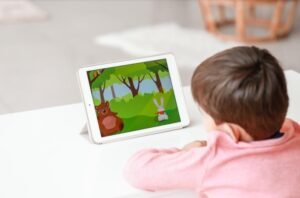The fight between good and evil is as old as man himself, if not older! Since time immemorial, the struggle has been illustrated through stories and songs, describing the triumph of the righteous over the heinous. Even as entertainment was brought to the masses through the cinema and television, this ancient narrative has been the foundation of some of the most successful screen based narratives – from Jekyll and Hyde to every Marvel action film that was ever made.
The character list has always consisted of those good characters, who put themselves under extreme pressure to save the day against those baddies who are on a path to world domination, in one form or another.
And this narrative starts at an early age, when children are introduced to different characters, from the Teletubbies to Maileg Mouse, to the toy characters in Toy Story, and become enthralled in understanding the difference between what is right and good, and what is wrong and evil. In many cases, this is the time in which children learn strong lessons which carry them through into adulthood.
But what are the stages that a child goes through when following their favourite character on the TV, or finding them on shelves in the toy shops?
Identifying and empathising with the character

Young children live in a restricted world, yet getting to know characters that they can relate to are a great teaching tool for preparing them for the outside world. If they see on the screen the times when a character laughs out loud, gets upset, gets frustrated, is frightened by another character, this can often be related back to emotions that they feel themselves, and they learn to deeply empathise with that character. As a result, the child is in a position I which they can learn great life lessons, building resilience and a sense of self.
Developing emotional intelligence
Emotional intelligence is one of the greatest gifts an adult can teach a child – and that includes negative as well as positive emotions. By empathising with a character they know well, whether from the TV, or even from their own imagination when playing with a much loved toy, that child is learning how to process those emotions in a positive and affirming way, rather than being frightened of the emotions, and turning them into something more destructive.
By linking these emotions to events and circumstances, the impact of the lessons taught can be much greater, highlighting the rights and the wrongs, and giving the child a framework for healthy personal development.
Creating a structure for growth
This framework is created on the basis of how children like to copy the behaviour of these characters that they admire or relate to. A narrative will highlight the potential consequences of both positive and negative actions, and a child enthralled with the favoured character will be in a better position to understand the reaction, and relate it back to their own life.
A better understanding of complex moral lessons
Relatable characters can navigate complex moral dilemmas in ways that children can understand. By presenting characters with realistic challenges and choices, cartoon characters can teach children about moral ambiguity, empathy, and the importance of critical thinking when making ethical decisions.
This is particularly important when relating things bac k to cultural contexts. The modern world, has never been more highly diverse, with the movement of populations guaranteeing a spread of cultural traditions and thinking that challenge the boundaries of established communities. The simple story structure of children’s toy characters can highlight greater understanding based on a wider perspective, fostering understanding and acceptance on all sides.
Overall, using relatable characters in cartoons is a powerful tool for teaching children the difference between right and wrong, as it engages them emotionally, provides positive role models, and helps them understand complex moral concepts within the context of their own lives.
